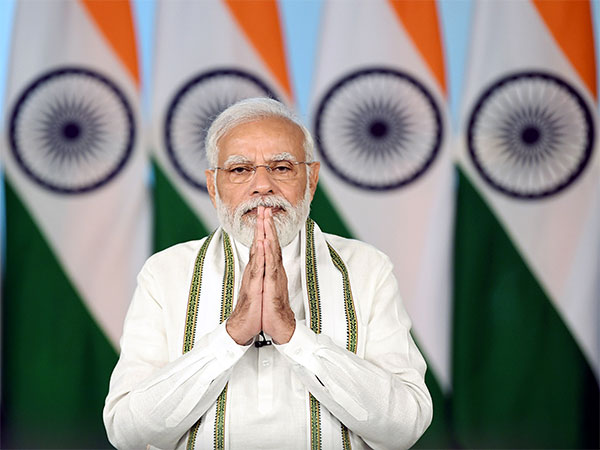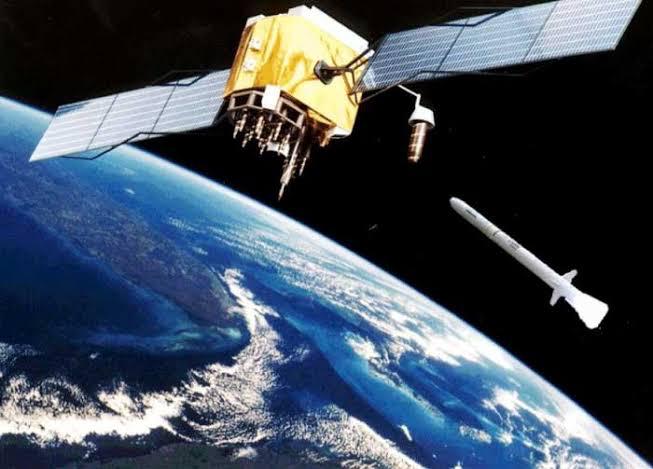
Leveraging Defence Expos for an Atmanirbhar Defence and Aerospace Ecosystem
Fri, 22 Jan 2021 | Reading Time: 9 minutes

The 13th edition of the AeroIndia, one of the two flagship events that the Department of Defence Production under the Ministry of Defence hosts every two years alternatively with the DefExpo, is scheduled in the first fortnight of February 2021. The event is logically located in Bengaluru, the centre for aviation R&D in the country and the location of the premier aviation-related defence establishments such as the Aeronautical Development Agency (ADA) and the Hindustan Aeronautical Limited (HAL), apart from the IAF’s Training Command and Defence Research and Development Organization (DRDO) labs. The buzz it generates as the biggest defence aviation expo in South Asia is as remarkable for the number of technical and military personnel that descend on the city for the week-long event as it is for the foreign original equipment manufacturers (OEMs) and vendors of defence aviation products. Coming on the heels of the long-awaited approval of Government of manufacture of 83 Light Combat Aircraft (LCA) ‘Tejas’ on HAL and the expected Initial Operational Clearance (IOC) for the Light Utility Helicopter (LUH), the expectations of domestic aerospace and defence manufacturing are high. Will this edition of the AeroIndia meet their expectations?
The number of participating companies has grown from 403 in 2019 to 540 in 2021. An India Pavilion has showcased the Indian story and become the biggest attraction since the DefExpo 2018. Over the years the DefExpo and AeroIndia have honed their focus areas to significantly concentrate on crucial key result areas. The theme, exhibition layout and treatment, seminars and technical discussions have been geared to focus on specific areas of interest to the Indian armed forces and aerospace and defence industry. These have included defence R&D, innovation, startups, knowledge seminars and skill development. Given the huge potential that the foreign OEMs and governments see in the Indian defence market, there has been a good response to these initiatives. This has resulted in good participation by companies and governmental delegations led by senior government and military leaders. The Department of Defence Production has moved away from the earlier practice of getting an Industry association at the apex level to organise the event and instead activated a Defence Exhibition Organization under an officer of the Services to coordinate and lead the event with industry associations, academia and think tanks involved in the seminars and technical interactions. Apex industry associations continue to be associated with seminars and country-specific meetings and seminars. A permanent tagline for the event is also a welcome departure from the searching for a new theme for every event. An after-event practice of an ‘Outcome Report’ has also been instituted to capture the gains of the event and to pursue the possibilities generated. AeroIndia 2021 will be the first international defence expo in a hybrid model, both physical and virtual. These are all positive steps and have acquired an institutional basis given the current government’s focus on tangible results and accountability. The time is perhaps opportune to consider how to build on these.
Prime Minister Modi’s emphasis on self-reliance and ‘Make in India’ has been given a sharper focus with the call for an Atmanirbhar Bharat. The steps taken by the Defence Ministry to notify lists for indigenization and to move away from imports are indeed very salutary in this direction. The proposed amendments to the Defence Acquisition Policy 2020 and Offsets must also be seen in this light. The challenge is to ensure that the different initiatives come together synergistically to ensure that the Indian armed forces get the required items to remain equipped to face the challenges posed by the geopolitical situation of the region. However, for this to happen, the entire defence and aerospace manufacturing ecosystem must get aligned.
From the perspective of augmentation of indigenous aerospace and defence sector capabilities, a defence exposition is a significant marker of a country’s aspirations. It showcases domestic capabilities and possibilities. It attracts exhibitors and OEMs of both legacy and new technologies who seek partnerships and markets. A comparative analysis of the AeroIndia outcome reports prepared by the Department of Defence Production is revelatory in that it indicates a considerable scaling up of the objectives of the organizers. In keeping with the tag line for the 2019 event, “Runway to a billion opportunities”, there were several firsts in the list of achievements. Not only in terms of numbers of participation of Indian and foreign companies, static and flying displays, exhibition area and revenue generation but also in terms of the serious business for which these events are primarily organised: business-to-business (B2B) contracts and MoUs signed, technology tie-ups and product launches. There is, however, need to be cautious about the announcements made since the ‘grounding’ of announcements almost always fall short of the promise. Given that 2020 was an aberration due to the pandemic, tracking the actualization of the announcements may not offer very realistic assessments. Nevertheless, it would be useful to review the vectors set.
Both AeroIndia 2019 and DefExpo 2020 categorically set the direction towards domestic manufacturing and augmentation of technical capability to not just take up indigenization but also to chart new paths of manufacturing in defence and exports. Changes in FDI policy to enable up to 100% investment in defence, simplifications in industrial licensing to facilitate Ease-of-Doing-Business and associating other Departments/Ministries such as Directorate General of Foreign Trade (DGFT) under the Ministry of Commerce and National Skill Development Corporation (NSDC) under Ministry of Skill Development, wooing Startups through the Defence India Startup Challenges and associating academia by collaborating with IITs and other engineering colleges are steps that point to an approach that is based upon a sense of direction. The amendments proposed to the acquisition policy and offsets policy are intended to signal both direction and urgency to this approach.
The approval of the Cabinet Committee on Security (CCS) to Tejas Mark 1A, the long-awaited indigenously designed and developed light combat aircraft (LCA) by Defence Public Sector Undertaking (DPSU) HAL could not have come at a more opportune time. The contract for 83 aircraft worth Rs 48,000 crore conveys the maturing of domestic technical capabilities and signals the confidence of the Indian Air Force in a platform that will replace the MiG 21 fleet and operate alongside the Su 30 and Rafael aircraft with different role functions. It is a 4.5 generation aircraft that involves outsourced components from domestic private firms of all five major sections: the front fuselage, wings, centre fuselage, rear fuselage and the tail and rudder. The HAL has, in the process, transitioned from knocked down assembly under licensed production to manufacturing in association with Indian OEMs. It also conveys the government’s resolve to induct indigenous technologies into a key defence sector. It is also expected that the Initial Operational Clearance (IOC) for the Light Utility Helicopter (LUH) manufactured by the HAL will be given. The LUH is poised to be the replacement for the Chetak, the IAF’s workhorse in high altitude areas. With the weaponised Advanced Light Helicopter (ALH) and the Light Combat Helicopter (LCH) also ready, the indigenization component is expected to receive a big boost. The downstream effect of domestically manufactured components and sub-assemblies will be huge.
Defence PSUs such as HAL and Bharat Electronics Limited (BEL) have been at the forefront of technical collaboration with foreign OEMs. BEL’s footprint in working with domestic industry in avionics, radars, Satcom and electronic warfare sectors has created a manufacturing ecosystem that now needs to be scaled up and linked to newer fields of application, such as UAVs. It is important that the agreements inked in 2019 with companies such as Elettronica SpA (ELT), Italy, Elisra, Israel and Hughes India, Thales apart from JSR, Nagpur are implemented in real earnest. Low hanging fruits must be focussed on even by factories under the Ordnance Factories Board (OFB) whose factory in Dehradun has a few proposals in advanced stages for high-end product manufacture with technology transfer for the India Army.
The focus on UAVs, especially drones, has been renewed in the aftermath of the recently concluded war between Armenia and Azerbaijan in Central Asia. Considerable hype was generated around the UAVs in 2019 through the first ever Drone Olympics, Start-up Day, a Technology Day and association of the IITs and the DRDO. The use of drones for the application of AI needs a close interface with the Services. This will be the driver for the integration of these technologies whether in surveillance, reconnaissance or operations. The Global CEOs Round Table organized on the occasion was a signal to a more pragmatic approach. An industry-Services interface needs to be created quickly to move beyond the technical aspects to application platforms which will enable domestic manufacturing to leapfrog. Communications for field level operational control will be another key area to focus upon. If there is a need, a separate, more focussed event on these technologies should be organised through the Department involving the key stakeholders without waiting for the main marquee event in 2023. This will facilitate scaling up of the initiatives that have been taken and hasten fructification of these efforts along with artificial intelligence platforms. Most importantly, it will underline the resolve to build on this technological vector.
Given this context, the forthcoming AeroIndia 2021 must be leveraged effectively to promote the Prime Minister’s direction for an Atmanirbhar Bharat. The effort should be to focus on the entire ecosystem and not just be limited to Memoranda of Understanding (MoUs) and agreements for manufacturing. A good beginning was made in 2019 with the focus on the MRO sector, involving the Ministry of Civil Aviation (MoCA) and the Ministry for Skill Development for skilled technical manpower in the aeronautical sector through an MoU between the Aerospace and Aviation Sector Skill Council under the NSDC and the Singapore Polytechnic. The maintenance, repair and overhaul (MRO) sector is expected to reach 1.2 billion USD by 2021 and can provide a good base for the technical support to the aerospace industry in the country.
A criticism of defence sector manufacturing is that it is a slow, cumbersome process. The GSQRs of the Services are often such that they result in a single vendor situation or require extensions of dates. Development of products requires several clearances, quality certification after extensive trials by the armed forces. A positive step has been to open up quality and certification labs to private industry and steps are underway to enable setting up of accredited laboratories too. However, at the crux of this issue remains the need for the Forces to be more nimble and facilitative to sustain the interest of the private sector. The prototype-to-product timeline needs to be drastically reduced. The DRDO can take a lead in this just as the ISRO has done in the space sector.
The efforts of the innovators and startup community must be given a direction for gains in the short and medium-term. At the same time, it is also necessary for the innovation spiral to not be curtailed by limits. Setting up of a joint mechanism of the three Services under the CDS to identify key technologies for the operational requirements of the Forces is an imperative that should be pushed with the mandate to scan military technologies and platforms that can be developed in the country. This mechanism needs to be linked to one led by the Department of Defence with DRDO, academia and startups to actualize the projects thus identified, bringing manufacturing capacity and technology together. This forum could be the interface with the technology exchange fora that exist with countries such as the USA, France and Israel under the formal mechanism, with the clear objectives of identifying and implementing specific projects in a defined time frame. A beginning has already been made with the USA.
In order to build upon initiatives to promote domestic capacity, organizing an event that will focus only on this aspect could be considered in the period between the main events. An event that brings together DPSUs, industry, startups and innovators could be considered with the core attention on promoting indigenous production in defence and aerospace. This should be a joint event of the Department of Defence Production and the Services to ensure tangible results. While the Department’s Defence Innovation initiative has had some successes, perhaps there is need to tap into the recent Rs 1000 crore Startup initiative, Prarambh, announced by Prime Minister Modi recently to create a more vibrant startup community in the defence sector.
An approach to link up the manufacturing initiative with the opportunities offered by the Offsets regime is necessary. The objectives of 2006 included fostering the development of internationally competitive enterprises, augmenting capacity for research, design and development in defence products and services apart from encouraging the development of civil aerospace and internal security. Amendments in July 2020 delete services, civil aerospace and internal security sectors shifting the focus to manufacturing. This was perhaps because of the 54 offset contracts valued at 11.79 bn USD signed till 2019, with discharge obligations of 3.60 bn USD, the actual discharge was only 1.68 bn USD and though IOPs numbered 171, approximately 87% of the discharge was by only 15 IOPs, with 5 of them accounting for over 50%. Significantly, over 90% of the discharge obligation pertained to direct purchase of products and services, not manufacturing.
The new offset policy includes multipliers to facilitate technology transfer, attract FDI and promote export of finished products through higher multipliers of 2, 3 and 4 for investment and technology transfer and not merely parts and components have been introduced. The duration of discharge of obligations has been modified to two years beyond the end of the main contract, excluding the warranty period. Fulfilment of offset discharge by entities other than the main offset provider and it’s Tier I sub-vendors has also been allowed to enable subsidiaries/sister companies to fulfil discharge obligations on their behalf. ‘Banking’ of offsets, introduced in 2008 has been discontinued. Inclusion of MSMEs in the multipliers has been done with similar incentives for the two Industrial Corridors announced in 2017. Greater transparency and accountability of the government is attempted through an on-line process for reporting and monitoring of offset discharges. It is important to send a clear message that foreign OEMs need to take advantage of these changes if they wish to engage.
The organization of an event such as the AeroIndia requires considerable planning and effort. At the end of the day, it should not be remembered as merely a spectacular extravaganza. Its success will lie in the tangible gains in the form of technology transfers and manufacturing agreements that will help the development of the aerospace and defence industries within the country. While the event must showcase the achievements of domestic industry, including the PSUs and Ordnance Boards, it must enable the actualization of the policy changes that the government has rolled out as part of its facilitative approach. From the overall defence manufacturing and capability enhancement perspective, foreign OEMs and vendors must find it worth their while to find a market. Policies and facilitative mechanisms of the government should be able to instil confidence in them to collaborate and co-produce with Indian entities. Private industry and the start-up community must feel enthused to work in the defence sector too. But most importantly, it must enable the growth of the indigenous industry and the realization of the Ministry’s objective to achieve a 25 billion USD (Rs 1,75,000 crore) defence industry with a 5 billion USD (Rs 35,000 crore) export order by 2024. To do so, the leveraging of the opportunities offered by such a marquee event is essential.
Disclaimer
The opinions expressed in this article are the author’s own and do not reflect the views of Chanakya Forum. All information provided in this article including timeliness, completeness, accuracy, suitability or validity of information referenced therein, is the sole responsibility of the author. www.chanakyaforum.com does not assume any responsibility for the same.
Chanakya Forum is now on . Click here to join our channel (@ChanakyaForum) and stay updated with the latest headlines and articles.
Important
We work round the clock to bring you the finest articles and updates from around the world. There is a team that works tirelessly to ensure that you have a seamless reading experience. But all this costs money. Please support us so that we keep doing what we do best. Happy Reading
Support Us




















POST COMMENTS (1)
Naveen Singh Rawat